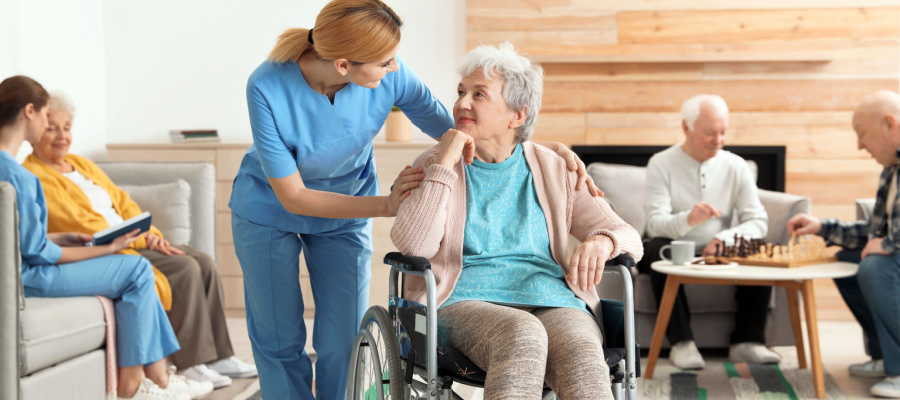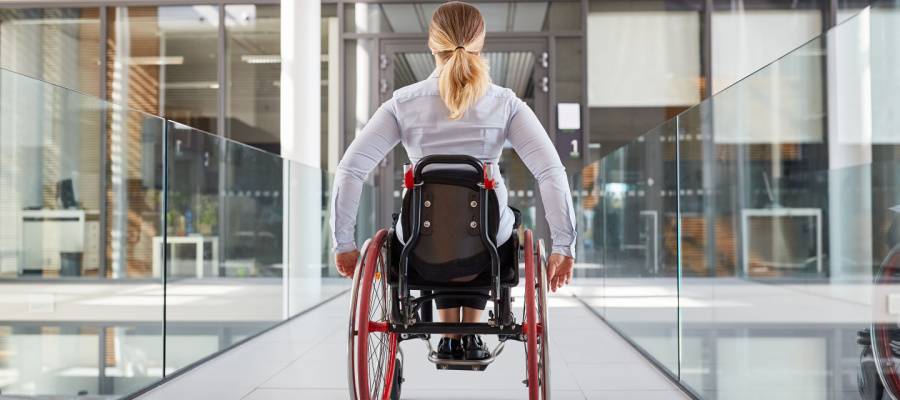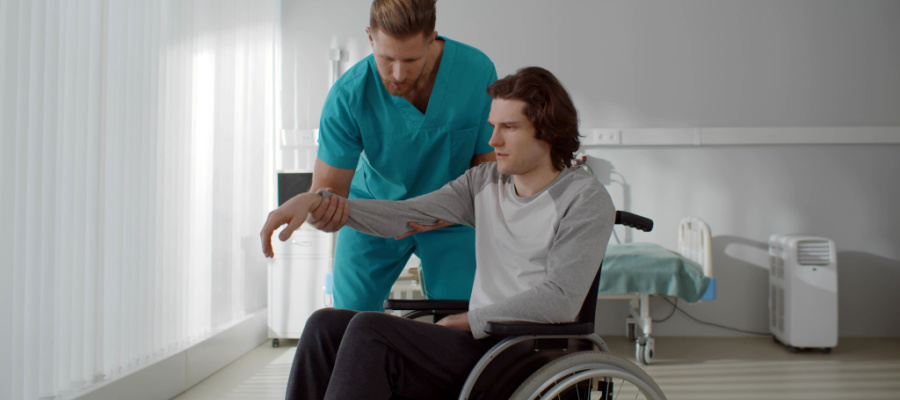Understanding Paralysis in the Elderly
Paralysis is a loss of muscle function or movement, typically caused by damage to the nervous system, and it can be a serious and life-altering condition for people of all ages. When paralysis affects the elderly, the situation often becomes more complex due to factors such as age-related health conditions, slower recovery rates, and the presence of multiple comorbidities. Understanding how paralysis develops, what causes it, and how it can be managed in older adults is crucial for both patients and caregivers.
At Devoted Helpers, based in Sugar Land, Texas, we provide compassionate in-home care and support for elderly individuals facing the challenges of paralysis. In this article, we will explore the different types of paralysis, its causes in the elderly, and how it can be managed and treated.
Types of Paralysis in the Elderly
Paralysis can affect different parts of the body, and understanding its types helps to understand how it impacts a person’s daily life…
- Monoplegia – Paralysis affecting only one limb (arm or leg).
- Hemiplegia – Paralysis on one side of the body, including the arm, leg, and sometimes the face.
- Paraplegia – Paralysis affecting the lower half of the body, typically both legs.
- Quadriplegia – Paralysis affecting all four limbs—both arms and both legs.
The type of paralysis that affects an elderly individual depends on the cause, as well as the area of the nervous system that is damaged.
Common Causes of Paralysis in the Elderly
While paralysis can occur at any age, the elderly are more vulnerable to certain conditions that can lead to paralysis. Some of the common causes include…
Stroke
A stroke occurs when blood flow to the brain is interrupted, causing brain cells to die. Stroke is one of the most common causes of paralysis in the elderly. It can lead to hemiplegia, or paralysis on one side of the body, which can affect movement and independence.
- Risk Factors – High blood pressure, heart disease, diabetes, and a history of smoking can all increase the risk of a stroke.
- Recovery – Depending on the severity of the stroke and the speed at which treatment is received, some individuals may regain partial movement through rehabilitation therapies, while others may face permanent paralysis.
Spinal Cord Injury
Though less common, spinal cord injuries in the elderly, particularly from falls, can result in significant paralysis. These injuries may result in paraplegia or quadriplegia, depending on the location of the injury in the spinal column.
- Risk Factors – Falls, especially in those with weakened bones from osteoporosis, are the leading cause of spinal cord injuries in older adults.
- Recovery – Spinal cord injuries can often lead to permanent paralysis, though some individuals may experience partial recovery with physical therapy or surgery.
Neurological Disorders
Neurological conditions such as Parkinson’s disease, multiple sclerosis (MS), and amyotrophic lateral sclerosis (ALS) can lead to progressive paralysis over time.
- Parkinson’s Disease – A neurodegenerative disorder that causes tremors, muscle rigidity, and movement difficulties. While it may not cause complete paralysis, the disease can severely limit mobility and independence.
- Multiple Sclerosis – MS causes the immune system to attack the protective covering of nerve fibers, which can lead to muscle weakness and paralysis in various parts of the body.
- Amyotrophic Lateral Sclerosis (ALS) – Also known as Lou Gehrig’s disease, ALS progressively destroys motor neurons, leading to muscle weakness, atrophy, and eventually paralysis.
Guillain-Barré Syndrome (GBS)
Guillain-Barré Syndrome (GBS) is an autoimmune disorder that causes the body’s immune system to attack the peripheral nervous system. This can result in rapid-onset paralysis, starting in the lower limbs and progressing to other parts of the body.
- Risk Factors – GBS is often triggered by infections like the flu or a viral illness.
- Recovery – While GBS can lead to temporary paralysis, many individuals do recover with treatment, although older adults may experience a slower recovery.
Infections
Certain infections, such as meningitis and polio, can cause damage to the brain or spinal cord, resulting in paralysis. Although polio is less common today due to vaccination efforts, meningitis and other viral or bacterial infections can still pose a threat.
Tumors
Tumors in the brain or spinal cord can put pressure on surrounding tissues, leading to paralysis. The elderly are at a higher risk of developing tumors due to age-related changes in the body and immune system.
Challenges of Paralysis in the Elderly
Paralysis in elderly individuals presents a number of challenges, not only for the person affected but also for their caregivers and family members. Some of the unique challenges include…
- Slower Recovery – As we age, the body’s natural ability to repair itself and recover from injury or illness declines. Older adults may face a longer recovery period, and some may not recover as fully as younger individuals.
- Increased Risk of Complications – Paralysis can lead to a variety of complications, such as:
- Pressure sores (bedsores) due to immobility
- Muscle atrophy (muscle wasting) from lack of use
- Respiratory issues, especially if the paralysis affects the diaphragm or lungs
- Urinary tract infections (UTIs) due to difficulty with bladder control
- Cognitive Decline – Older adults with paralysis may also face cognitive decline or dementia, making it harder to understand and manage their condition.
- Emotional and Psychological Impact – Being diagnosed with paralysis can cause feelings of depression, anxiety, and loss of independence, which are more pronounced in the elderly. Emotional and psychological support is essential during this difficult time.
Managing Paralysis in the Elderly
While paralysis may not always be curable, it can often be managed effectively through a combination of medical treatments, therapies, and in-home care. Some approaches include…
Physical Therapy
Physical therapy plays a key role in helping individuals maintain or regain movement, improve muscle strength, and reduce the risk of complications like muscle atrophy and joint stiffness. While recovery may be slow for elderly individuals, consistent therapy can help improve mobility and overall quality of life.
Occupational Therapy
Occupational therapy focuses on helping individuals regain the ability to perform daily tasks, such as dressing, bathing, and eating. For elderly individuals with paralysis, assistive devices may be introduced to help with mobility, such as wheelchairs, walkers, or modified home environments.
Medication
Medications may be prescribed to address underlying conditions causing paralysis, manage pain, or treat complications like spasticity (muscle stiffness). Pain management, in particular, is crucial to the overall well-being of someone living with paralysis.
Emotional and Mental Health Support
The emotional toll of paralysis can be overwhelming, especially for older adults who may also be dealing with the loss of independence. Counseling, support groups, and even medications for depression or anxiety may be beneficial for improving mental health.
In-Home Care and Support
In-home care services can provide essential assistance for elderly individuals with paralysis. At Devoted Helpers, we offer personalized care plans that include assistance with daily activities, medication management, physical therapy support, and emotional well-being.


